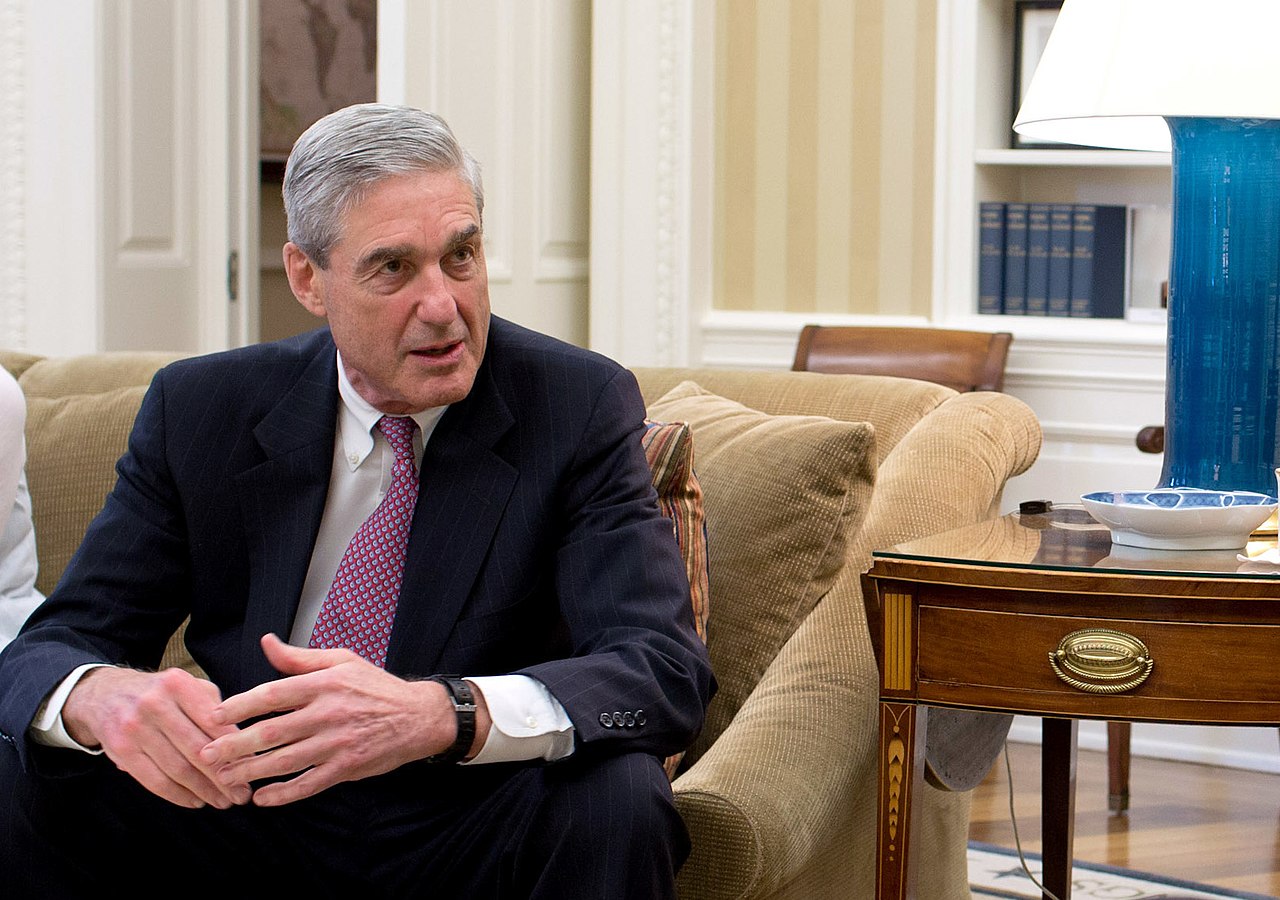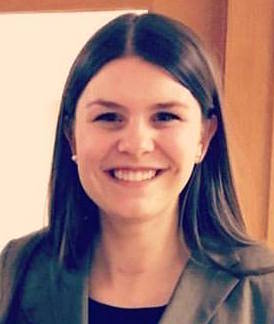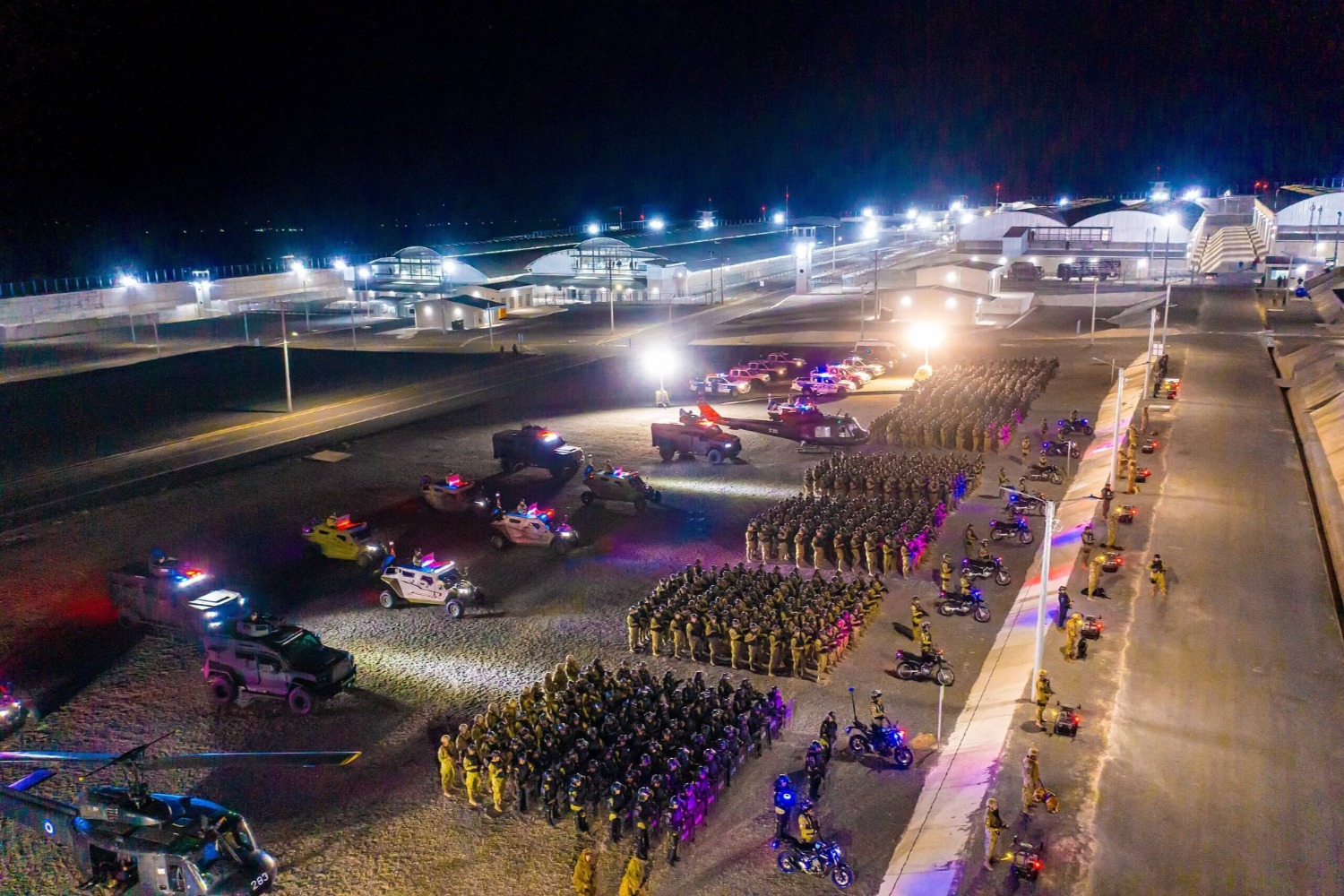About That Russia Indictment: Robert Mueller's Legal Theory and Where It Takes Him Next
The news cycle has moved on from the recent indictment of 13 Russians over that country’s alleged interference in the 2016 U.S. presidential election. We, however, have been spending some quality time with it.

Published by The Lawfare Institute
in Cooperation With

The news cycle has moved on from the recent indictment of 13 Russians over that country’s alleged interference in the 2016 U.S. presidential election. We, however, have been spending some quality time with it.
The legal theory used by Special Counsel Robert Mueller turns out to be worth pondering in some detail, as it offers considerable insight into where he may be headed next. When news of the indictment broke, a number of commentators—including one of us—suggested that the legal theory was novel. On closer inspection, however, it doesn’t seem new. Still, the indictment is rather clever, drawing on a venerable and well-trodden theory of criminal liability in a fashion that Mueller may be able to leverage into a powerful instrument with respect to both foreign and domestic actors.
Let’s unpack it.
The indictment works like this: It is a crime to conspire to “obstruct the lawful functions of the United States government through fraud and deceit.” The Federal Election Commission, the Justice Department and the State Department are charged with enforcing U.S. laws, including laws that prohibit foreign nationals from making expenditures to influence federal elections, that require agents of foreign entities to register as foreign agents and that require truthful disclosure on visa applications. According to the facts alleged in the indictment, the defendants created false U.S. personas to operate social media accounts designed to influence the 2016 presidential election while hiding the Russian origin of their activities. In addition, several of the defendants “traveled to the United States under false pretenses for the purpose of collecting intelligence” to aid the Internet Research Agency’s influence operations. In so doing, defendants are alleged to have conspired to obstruct agencies of the U.S. government “by making expenditures in connection with the 2016 U.S. presidential election without proper regulatory disclosure; failing to register as foreign agents carrying out political activities within the United States; and obtaining visas through false and fraudulent statements.”
The crime of conspiracy to defraud the United States is not new. It has been sitting in plain sight in the general conspiracy statute, 18 U.S.C. §371, since 1948 (and an earlier provision with substantially similar language dates to 1867). The statute makes it illegal for two or more persons to “conspire either to commit any offense against the United States, or to defraud the United States, or any agency thereof in any manner or for any purpose.”
Unlike conspiracy to commit an offense, conspiracy to defraud the United States need not be connected to a specific underlying crime, and “defraud” is not defined. In the 1910 case Haas v. Henkel, the Supreme Court interpreted the provision broadly to include “any conspiracy for the purpose of impairing, obstructing, or defeating the lawful function of any department of government.”
Notably, there is no requirement that the government be cheated out of money or property.
A decade after Haas, the high court narrowed this interpretation slightly in Hammerschmidt v. United States, clarifying that conspiracy to defraud the United States includes conspiracy “to interfere with or obstruct one of its lawful governmental functions by deceit, craft, or trickery, or at least by means that are dishonest.” In other words, to prove a claim under the defraud prong of §371, the government must show that the defendant (1) entered into an agreement (2) to obstruct a lawful function of a government agency (3) by deceitful means and (4) committed at least one overt act in furtherance of the conspiracy.
In essence, the crime is conspiring to, by “deceitful” means, make it harder for the government to do what it is statutorily bound to do. Often, these dishonest means constitute crimes in and of themselves, and a charge under §371 can be accompanied by charges of other substantive offenses. But a charge of conspiracy to defraud can stand on its own, a fact that has attracted criticism, particularly in response to the government’s use of §371 to prosecute tax crimes under what’s known as the Klein conspiracy doctrine.
In United States v. Klein, a 1957 case in the Second Circuit Court of Appeals, the government charged both tax evasion and conspiracy to defraud the United States by impeding the function of the IRS. The tax-evasion counts were dismissed, and the jury convicted on the conspiracy count alone. The Second Circuit upheld the convictions anyway, holding that there was sufficient evidence of conspiracy to conceal the nature of defendants’ business activities and income. This count of the indictment was not doomed by the court’s finding that, because of the structure of defendants’ business operations, the counts of direct tax evasion could not proceed. As the Ninth Circuit later acknowledged in an opinion expressing considerable discomfort with the breadth of activity covered by the conspiracy-to-defraud prong, “Neither the conspiracy’s goal nor the means used to achieve it need to be independently illegal.”
Notably for present purposes, §371 has been deployed in the context of election law specifically. The Justice Department’s manual on federal prosecution of election offenses explicitly contemplates bringing charges of conspiracy to defraud based on campaign finance offenses. It explains the theory as follows:
To perform [its] duties, the FEC must receive accurate information from the candidates and political committees that are required to file reports under the Act. A scheme to infuse patently illegal funds into a federal campaign, such as by using conduits or other means calculated to conceal the illegal source of the contribution, thus disrupts and impedes the FEC in the performance of its statutory duties.
Several federal circuit courts have heard cases brought under §371 based on this theory and have not found fault with its application to behavior that may also violate the Federal Election Campaign Act (FECA). The defendants in United States v. Hopkins, decided by the Fifth Circuit Court of Appeals in 1990, were officers and directors of savings-and-loan institutions, which are prohibited under the FECA from making political contributions. They were accused of arranging for individual officers and employees to make such contributions, for which they were given reimbursements disguised as pay raises or legitimate business expenses. Citing the Hammerschmidt formulation, the Fifth Circuit upheld their convictions under §371 for conspiring to defraud the FEC. A showing that the defendants had specific knowledge of Federal Election Campaign Act provisions they conspired to frustrate was not required; the jury could infer from the evidence that defendants’ actions were “designed to evade the FEC’s reporting requirements.” Moreover, the court directly considered whether it was proper for the government to bring conspiracy charges based on alleged violations of the act in the absence of substantive FECA charges. It held that the prosecutor was within his discretion to charge the defendants with felony fraud and concealment under Title 18, rather than with misdemeanor election-law violations, because “when an act violates more than one criminal statute, the Government may prosecute under either.”
The defendant in the 1994 Third Circuit case of United States v. Curran made a related argument in his appeal of a conviction for conspiracy based on a similar scheme. Although the alleged facts included FECA violations, the government did not bring charges under election law because the statute of limitations had elapsed. Defendant Curran argued unsuccessfully that the statute of limitations for election-law offenses should apply instead of the longer statute of limitations for felony conspiracy. As in Hopkins, the court found no problem with a decision to charge under Title 18 rather than under the Federal Election Campaign Act, though it granted a new trial for other reasons.
In short, though the use of §371 in the campaign context is not particularly prevalent, neither the Third nor the Fifth Circuits found reason to question the underlying theory. (The D.C. Circuit has heard a similar case but determined that the conspiracy count was not yet properly on appeal.) Indeed, in cases such as Curran, counts with more burdensome and specific requirements garnered substantially more attention from the court. Finally, in at least one D.C. district court case, part of the alleged conspiracy charged under §371 involved impeding the FEC specifically by concealing the foreign sources of contributions. It is not too big a leap from these cases to the recent indictment.
Russia’s sustained, many-front effort to interfere in the 2016 election—a glimpse of which was shown in the indictment—is undoubtedly more complex and far-reaching than the plots that have previously been prosecuted as conspiracies to defraud the United States. But that makes Mueller’s theory richer, not more novel. After all, he is alleging not merely a conspiracy to defraud the FEC but also a conspiracy to defraud the Justice Department in its regulatory capacity with respect to the Foreign Agents Registration Act (FARA) as well as one to defraud the State Department in its role issuing visas. Even if, for whatever reason, some portion of Mueller’s theory did not have legs under the Klein conspiracy doctrine, the diversity of regulatory functions inhibited by the fraud alleged in the indictment gives prosecutors a bunch of bites at the apple, assuming of course that the alleged facts are provable.
So why is Mueller’s use of this theory interesting? Because at least in principle, it could do a lot of heavy lifting in terms of others who might be involved—who might have, say, colluded with—this alleged plot. For months, commentators have been talking about “collusion” as though it is something of a puzzle what laws collusion would violate. It wasn’t that long ago that one of us, along with Lawfare’s Susan Hennessey, wrote this piece noting that “collusion, in and of itself and to the extent it took place, is a political problem, not a legal one,” suggesting that the criminal question depends on “the manner of any collusion and how that activity maps onto the criminal code,” and imagining various means of colluding that might imply criminal liability. Suffice it to say that neither we nor anyone else writing at the time had been thinking in terms of §371.
But assume for a minute that the legal theory in this indictment has legs and that Mueller has alleged a viable conspiracy to defraud the United States. To allege that a new conspirator had joined such a conspiracy, Mueller would have to allege only that such a person—presumably a new defendant—had agreed to participate in a scheme of deceit by which the FEC, the Justice Department or the State Department was deprived of its regulatory authority and committed some act in furtherance of the agreement.
Well, hmmm. Who might such a person be?
What about someone who, say, knowingly gave any hacked emails to the Internet Research Agency with the understanding that the troll farm would spread them around key segments of the U.S. voting population? The hacking of the emails, of course, is a separate crime under the Computer Fraud and Abuse Act. But what about a person or organization who—aware of the Internet Research Agency’s underlying activity—injected information into this allegedly fraudulent media ecosystem? Such a person might be a foreign intelligence actor or might be, say, a nominally independent cutout for such an actor. Under Mueller’s §371 theory, it wouldn’t much matter. As long as this person agreed to take part in the scheme to influence the U.S. election behind the back of the U.S. government and took a step to aid it, that person or entity would be guilty of a crime.
Which brings us to people on this side of the Atlantic—say, people who knowingly facilitated or participated in the distribution of emails through this mechanism or people who knowingly helped guide the activities of Internet Research Agency trolls. Such people might be inside or outside of the Trump campaign or organization. Their specific activities could all be, in and of themselves, perfectly legal. It’s an interesting question whether they would even need to know their interlocutors were Russian, much less acting at the behest of a foreign intelligence actor. As we read Mueller’s theory under §371, as long as they acted knowingly to join a scheme to deceive the U.S. government to frustrate its enforcement authority and took some action in pursuit of that scheme, they too would be guilty.
To be clear, without knowing details of the conduct of any specific individual, it would be irresponsible to speculate as to how a reasonable prosecutor would evaluate that person’s conduct with respect to this particular alleged conspiracy. For present purposes, our point is twofold: Mueller’s theory involves a well-established legal doctrine that has been deployed in roughly analogous situations, and it is potentially extremely powerful.






